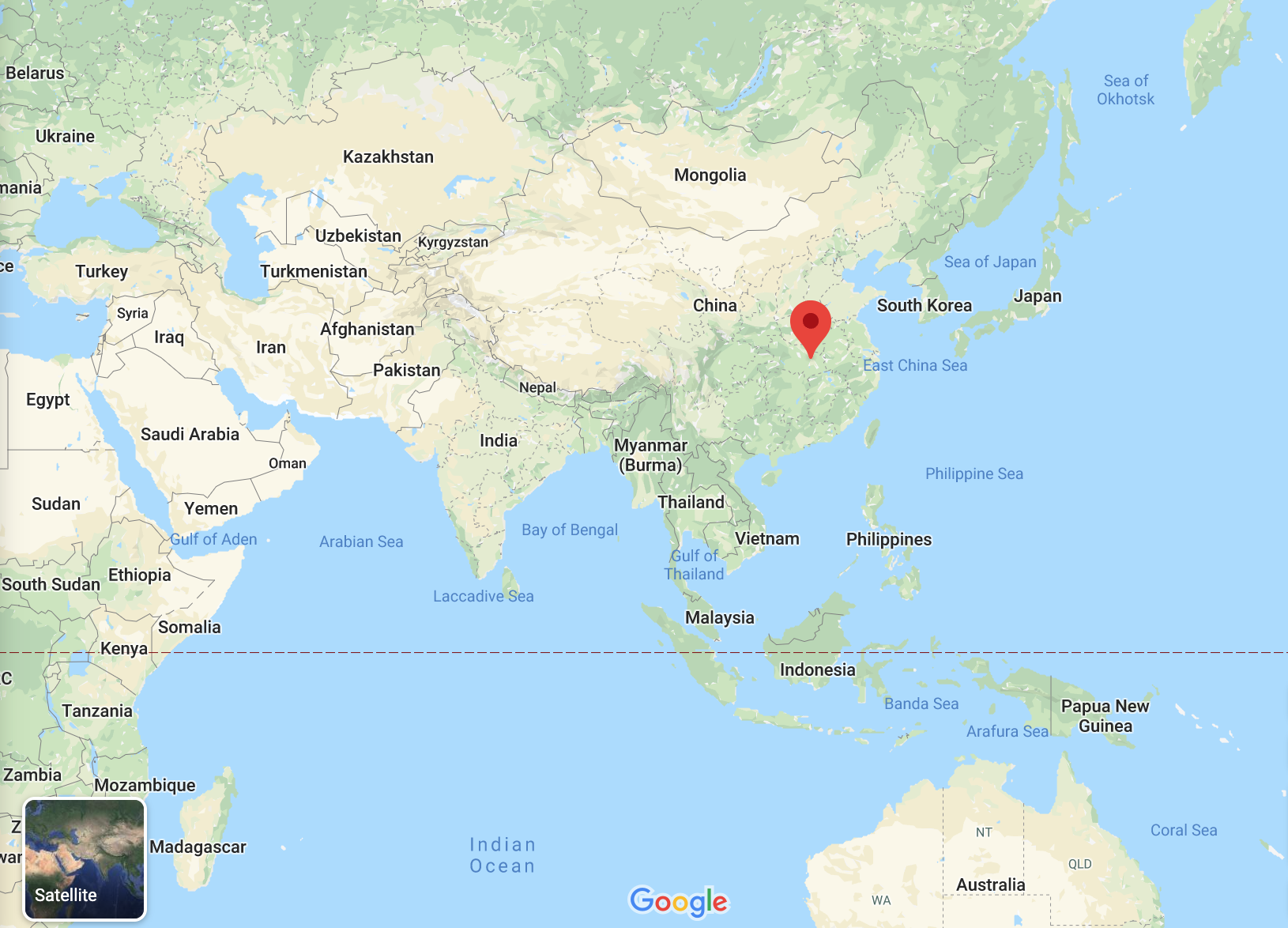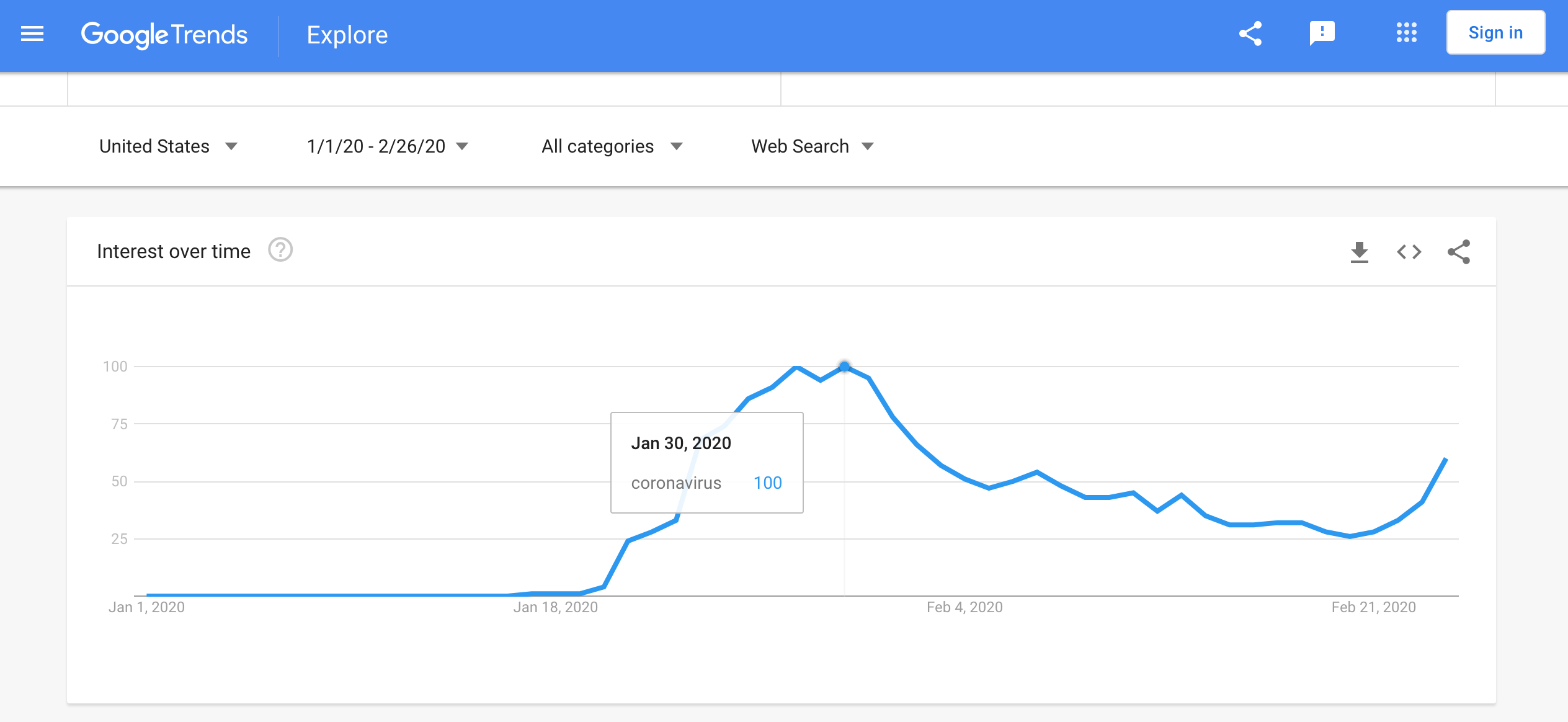At the University of California Institute for Prediction Technology, we work on developing digital tools, prediction algorithms, and models to solve all kinds of real-world problems. Like many people, our team at UCIPT has been watching Covid-19 — also known as Novel Coronavirus — spread from Wuhan, a city of 11 million people in China, across the globe.

Much has been written about misinformation being transmitted through social media throughout this and other epidemics, and indeed resources are required to ensure accurate and credible information is received by citizens. It has been encouraging, however, to see the World Health Organization (WHO) work with multi-national and local Chinese tech companies to ensure factual information is being disseminated through social networks. An example of this is the WHO alert that appears at the top of Google pages when coronavirus terms are searched. WHO has also placed Facebook ads to reach users to ensure they are reading credible information on the Coronavirus outbreak.
WHO Director-GeneralTedros Adhanom Ghebreyesus recently stated that circumstances such as the Coronavirus epidemic show us how small the world is. “Our global connectedness is a weakness in this outbreak, but it is also our greatest strength,” said Ghebreyesus. He noted it is paramount to combat rumors and falsehoods and praised Twitter, Facebook, Tencent and Tiktok for their efforts to limit misinformation.
One of the online resources we have been watching to ensure we are getting accurate information on the spread of the disease is the WHO digital map that clearly depicts the location and number of Coronavirus cases and deaths around the world. Another resource we have been utilizing is an interactive digital dashboard created by John Hopkins University. The Center for Systems Science and Engineering at John Hopkins built on the information provided by the WHO and integrated it with additional data from the Center for Disease Control, European Center for Disease Control, and DXY, the Chinese epidemic website.
Here at UC Irvine’s School of Information and Computer Science, one of the tools we have helped develop is a Twitter monitoring tool called Cloudberry. This year we have used Cloudberry to look at the number of U.S. tweets referencing Coronavirus. The states that have been home to the most tweets about the disease are California, Florida, New York and Texas. Cova-19 patients have been reported in three of these states — California, New York, and Texas.
Looking at this U.S. data piqued our interest in the areas in China using social media to communicate information about the virus. Cloudberry provides tweet data for the U.S. only, and Twitter is not permitted because of the Chinese political structure and highly censored digital content. So we turned to another social media source.
While Google is also banned in China, Chinese citizens can work around the restrictions by using a VPN to access the site. Thus, Google Trends has data on the regions in China that have searched the term ‘Coronavirus’ the most. Those cities are Shanghai, Beijing, and Guangdong – three major cities that form an arc around the epicenter of Wuhan.

Google data also shows that January 25 was the peak day for searches of Coronavirus in China. January 25 is also the first day of the Chinese New Year, the most crowded travel period in the world. According to Google the peak day for search of the term Coronavirus in the U.S., was January 30. Hawaii, Nevada, Washington, Alaska, and California had the highest number of Google searches – not surprisingly all Western states with close proximity to Asia.
Next, we turned to Baidu, the local version of Google, that is permitted in China. We reached out to Dr Qingpeng Zhang, a co-researcher at the City University of Hong Kong, who is running a research project that uses regression to determine whether Baidu search terms can be associated with the outbreak. Preliminary data indicates that Baidu search data is statistically associated with the spread of Coronavirus. We are continuing to study this phenomenon with Dr Zhang and hope to write a full academic paper once additional research on the relationship between Baidu searches and subsequent Cova-19 outbreaks has been undertaken. This would give us further insight into the ways that social media data can be used to predict public health outcomes.
This is an area we know well at UCIPT. In 2018, we published a paper in the Drug and Alcohol Dependence journal titled ‘Internet Searches For Opioids Predict Future Emergency Department Heroin Admissions.’ The hypothesis for this research was that heroin-related emergency department admissions might be preceded by people searching online for information relevant to opioids. Our study found that it does. Internet search data are being increasingly used for public health forecasting and understanding a variety of public health concerns. The paper concludes that internet search-based modeling should be explored as a new source of insights for predicting heroin-related admissions and that this approach can assist in managing opioid-related morbidity and mortality in the U.S.
The recent Coronavirus outbreak has us thinking about whether similar tools can be used to predict other epidemics. For all that is said about the downside of social media and its ability to spread misinformation, the other side of that coin is that social media can also be an excellent avenue to reach people with accurate and factual information. Further, we at UCIPT believe that social media can be a treasure trove of untapped data to gain insight into human behaviors and outcomes, facilitating precise and targeted solutions to those that need it. And it is for that reason that we see social media as having huge potential for social good.
